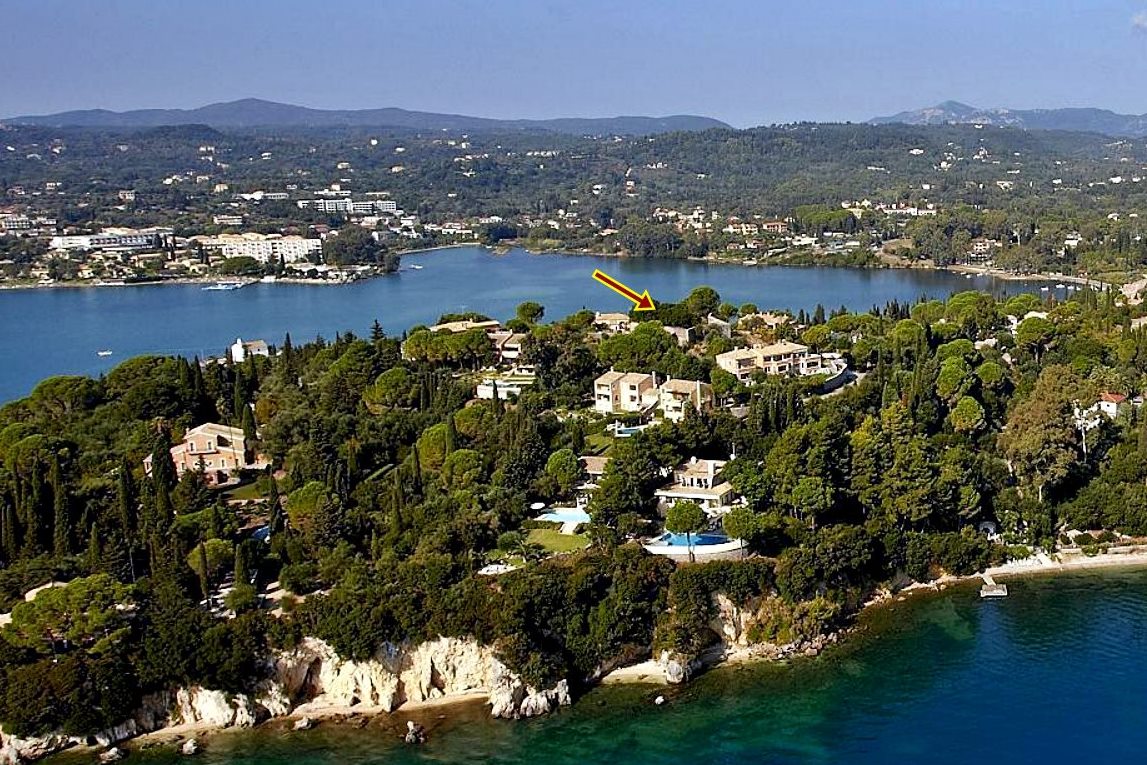Gouvia, Kentriki Kerkyra, Kerkyra,Ionian islands
Fort of Gouvia
| Location: |
| In the Kommeno area at the northern side of the bay of Gouvia in Corfu |
| Region > Prefecture: |  |
| Ionian islands Kerkyra | |
| Municipality > Town: | |
| City of Kentriki Kerkyra • Gouvia | |
| Altitude: | |
| Elevation ≈ 40 m |
| Time of Construction | Origin | |
| 1807 | MODERN GREEK |
|
| Castle Type | Condition | |
| Small Fort |
Average
|
A small star-shaped French fort hidden on a hill in the Kommeno area of Corfu, on the north side of Gouvia Bay.
History
The fort was built by the French in 1807.
Corfu was under French occupation in two periods: in the Napoleon period during 1797-1799 and in the Imperial period, after the Treaty of Tilsit, between the years 1807-1814.
The date of construction for the fort in Kommeno is indicated in illustrations of 1887 (photo 2, 3 – probably copies of older drawings) found in the National Library of France, where it is written that the fortifications for the defense of Gouvia were made in 1807.
The fort does not appear in older Venetian maps.
The French in that second period (1807-1814) built some fortifications in Gouvia and the islet of Vido. We know about the fortifications on the island of Vido that they were later rebuilt by the British, and in 1864 they were demolished, according on the London treaty of 1863 which decided the destruction of all the fortresses in Corfu. However, the fortification in Gouvia was spared together with the other (more important) fortresses on the island.
Historically, star-polygon forts appeared when gunpowder started to be used widely. They were first used in Italy in the middle of the 15th century, and, for this reason, this type of fortification is internationally known as trace Italienne.
It is a development of the medieval polygonal fortresses in which, after a certain period, strong bastions began to be placed in the corners to increase the defense against cannons. These bastions had to have sharp corners so that they could not be easily neutralized by enemy artillery. Eventually the fortresses came to be a number of pointed bastions in a radial arrangement. These star forts were very popular in Europe after the 16th century.
In Greece, apart from this fort at Kommeno, there is no independent fortress in which the entire layout is star-shaped. But there are several bastions with sharp angles attached to fortresses such as those of Methoni, Rio and the two fortresses of Corfu.
Structure, Fortification & Buildings
The fort is small. It has the shape of a degenerate star pentagon with 5 vertices and 4 edge-sides (“degenerate” because 2 of the sides are joined to form one long side or a “base”).
The perimeter of the fortification is 96 meters. The area inside is 375 square meters.
Each ray of the star is 9 meters long and the base, in the southeast part of the fort, 24 meters. Along each side of the star polygon are 10 rectangular rifle ports lined up in a straight line. At the base of the star, where the entrance to the fort is, there are 27 rifle ports (photo 8).
The fort is preserved at its original height and at first glance appears to be, at least externally, in good condition.
There is no information about the situation inside the fort where various buildings and vegetation can be seen. The satellite image shows that the interior is not a solid building complex.
In 1887 drawings (photos 2 and 3) three additional French fortifications for the defense of Gouvion Bay are depicted. (The bay of Gouvia was important because the naval station was located there during the Venetian period and apparently also during the French period.)
One of these additional fortifications seems to have been on the same hill, lower down, next to the sea. According to the archaeological bulletin of 1988, this has been incorporated into a modern private residence. The other two are depicted on the opposite cape, on the south side of the Gouvia bay.
We do not know if anything survives from these additional fortifications. Probably not.
| First entry in Kastrologos: | May 2023 |
Sources
- ΑΡΧΑΙΟΛΟΓΙΚΟΝ ΔΕΛΤΙΟΝ, τεύχος 43/Β1 (1988), σελ.326
- Research and info by Theofilos Tzikas
- BnF- Gallica, Bibliothèque nationale de France, département Cartes et plans, GE C-9597 (A), Port de Govino (Ile de Corfou), 1887
|
|
| Access |
|---|
| Entrance: |
| ? |
| Other castles around |
|---|
| Angelokastro |
| Gardiki Castle |
| Tower of Garoufa |
| Fortress of Kassiopi |
| New Fortress of Corfu |
| Old Fortress of Corfu |
















